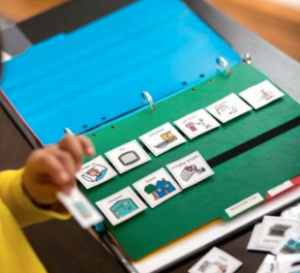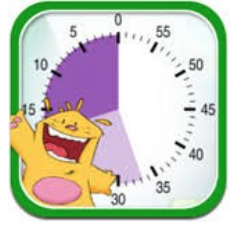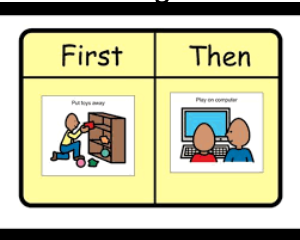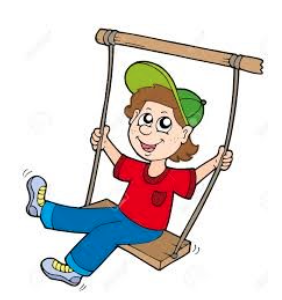What is the issue? Transitioning, or changing from one activity or setting to another, occurs many times throughout the day. Some children have a difficult time tolerating transitions and demonstrate increased challenging behaviors during these times.
Why is this an issue? Transitioning occurs many times throughout the day in all settings, including at home, school, work, and in the community. If a child has a difficult time tolerating transitions, they may become dysregulated, therefore not able to participate or engage in the many occupations and activities that they are expected to do or need to do throughout the day. Increasing the predictability of transitions throughout the day may be beneficial (Hume, 2018).
5 strategies to try at home

1. Creating a visual schedule of the day. Tip: Using a visual schedule with pictures or words (if the child can read) of the different activities throughout the day in the correct order may be beneficial. It is helpful to use Velcro to create these so your child can remove activities they have completed as they go throughout their day.

2. Using visual timers that track how much time remains for each activity. Tip: Visually tracking how much time remains in an activity can help a child understand that one activity is about to end and prepare for what comes next.

3. Preparing for transitions with warnings or countdowns. Tip: 5-minute warnings may be beneficial to help children prepare for ending one activity and transitioning to something different.

4. Using “First… Then…” Example: “First we are brushing our teeth, then we are going to bed”. This allows the child to understand the series of events occurring.

5. Ensuring the child is regulated prior to transition. Tip: Transitions are a lot easier for children when they are regulated. Ask your therapist for strategies that may help regulate your child, such as swinging, sorting activities, or different sensory strategies.
References: American Occupational Therapy Association. (2014). Occupational therapy practice framework: Domain and process (3rd ed.). American Journal of Occupational Therapy, 68(Suppl. 1), S1-S48. Hume, K. (2008). Transition time: Helping individuals on the autism spectrum move successfully from one activity to another. The Reporter 13(2), 6-10.

Learn More About My Programs
Blue Bird Day is a rotational therapy program structured like a preschool or kindergarten, but instead of teachers all our staff are therapists! This program is designed to foster socialization, sensory regulation, and learning for children ages 2-7 and helps provide children the tools they need to succeed in a traditional classroom.
Eyas Landing is an outpatient therapy clinic that provides services for children ages 0-21. Our multidisciplinary team of therapists provide ABA, developmental, occupational, physical, speech, nutrition and feeding therapy along with early intervention, social work, counseling, and neuropsychological testing at our West Loop clinic, in-home, at school, and virtually.
Merlin Day Academy is a therapeutic day school for children ages 6-14. Our proprietary model utilizes daily therapeutic and educational rotations to support children’s growth, learning, and their transition into the least restrictive environment possible.




